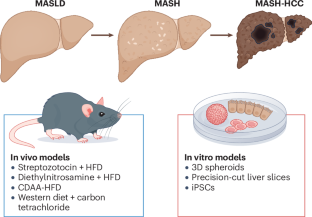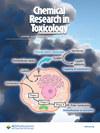Modelling human liver disease: from steatotic liver disease to MASH-HCC
IF 3.7
3区 医学
Q2 CHEMISTRY, MEDICINAL
引用次数: 0
Abstract
Having more refined mouse models of metabolic dysfunction-associated steatotic liver disease (MASLD; also known as nonalcoholic fatty liver disease) will help to advance research into this disease. In their study, Jeong and colleagues use streptozotocin together with a high-fat diet for 6–60 weeks to investigate the progression from MASLD to hepatocellular carcinoma.

人类肝病建模:从脂肪肝到 MASH-HCC
拥有更精细的代谢功能障碍相关性脂肪性肝病(MASLD,又称非酒精性脂肪肝)小鼠模型将有助于推进对这种疾病的研究。在他们的研究中,Jeong及其同事使用链脲佐菌素和高脂饮食6-60周来研究从MASLD到肝细胞癌的进展。
本文章由计算机程序翻译,如有差异,请以英文原文为准。
求助全文
约1分钟内获得全文
求助全文
来源期刊
CiteScore
7.90
自引率
7.30%
发文量
215
审稿时长
3.5 months
期刊介绍:
Chemical Research in Toxicology publishes Articles, Rapid Reports, Chemical Profiles, Reviews, Perspectives, Letters to the Editor, and ToxWatch on a wide range of topics in Toxicology that inform a chemical and molecular understanding and capacity to predict biological outcomes on the basis of structures and processes. The overarching goal of activities reported in the Journal are to provide knowledge and innovative approaches needed to promote intelligent solutions for human safety and ecosystem preservation. The journal emphasizes insight concerning mechanisms of toxicity over phenomenological observations. It upholds rigorous chemical, physical and mathematical standards for characterization and application of modern techniques.

 求助内容:
求助内容: 应助结果提醒方式:
应助结果提醒方式:


